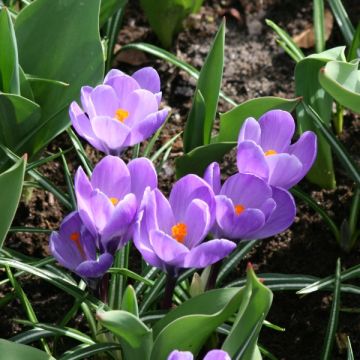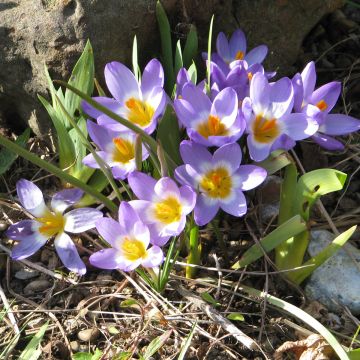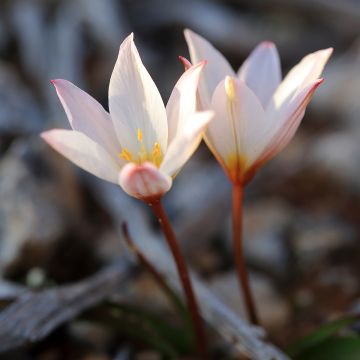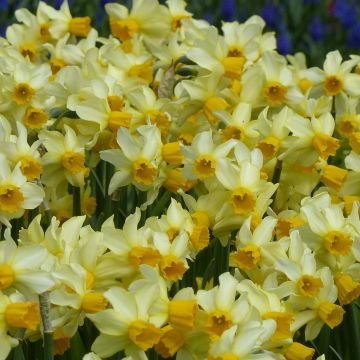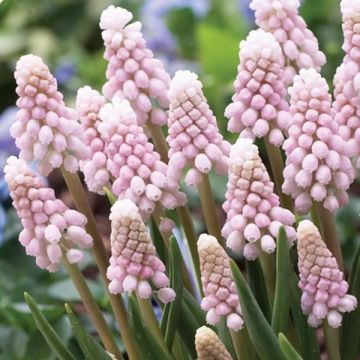Shipping country and language
Your country of residence may be:
Your country of residence is:
For a better user experience on our website, you can select:
Your shipping country:
Andorra
Austria
Belgium
Bulgaria
Canada
Chile
Croatia
Cyprus
Czechia
Denmark
Estonia
Finland
France
Germany
Greece
Hungary
Iceland
Ireland
Italy
Latvia
Lithuania
Luxembourg
Malta
Monaco
Netherlands
Poland
Portugal
Romania
Slovakia
Slovenia
Spain
Sweden
Switzerland
United Kingdom
We only deliver seed and bulb products to your country. If you add other products to your basket, they cannot be shipped.
Language:
French
German
Spanish
English
My Account
Hello
My wish lists
Plantfit
Log in / Register
Existing customer?
New customer?
Create an account to track your orders, access our customer service and, if you wish, make the most of our upcoming offers.


Crocus chrysanthus Constellation
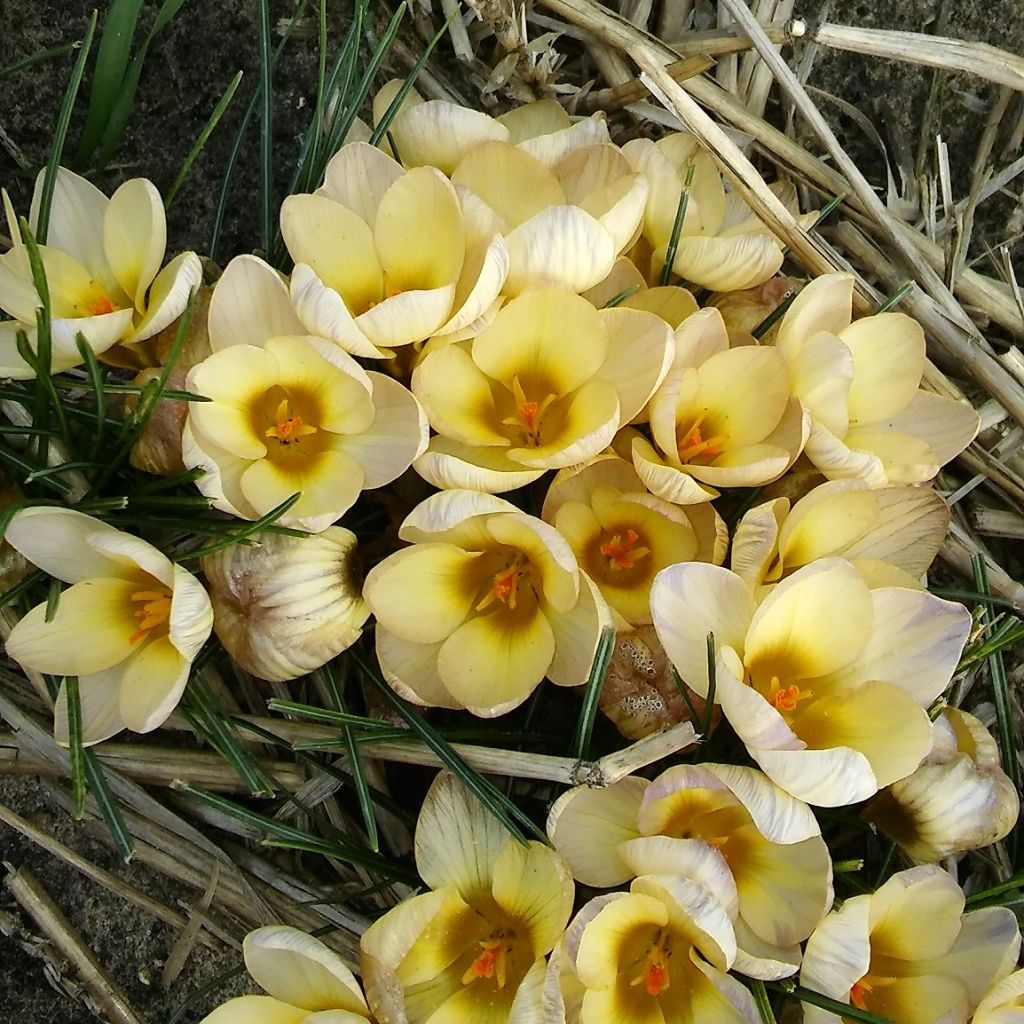

Crocus chrysanthus Constellation
Crocus chrysanthus Constellation
Crocus chrysanthus Constellation
Snow Crocus, Golden Crocus
Order in the next for dispatch today!
Dispatch by letter from €3.90.
Delivery charge from €5.90 Oversize package delivery charge from €6.90.
More information
This item is not available in your country.
Schedule delivery date,
and select date in basket
This plant carries a 6 months recovery warranty
More information
We guarantee the quality of our plants for a full growing cycle, and will replace at our expense any plant that fails to recover under normal climatic and planting conditions.
From €5.90 for pickup delivery and €6.90 for home delivery
Express home delivery from €8.90.
Does this plant fit my garden?
Set up your Plantfit profile →
Description
Crocus chrysanthus 'Constellation' is a variety of botanical crocus that brightens up the garden early in the season, just after snowdrops. Its lovely flowers are white, veined with violet on the outside and enhanced by a yellow to light bronze throat with vibrant orange stamens. It is a vigorous and reliable variety, with small bulbs that are easy to cultivate. They naturalise easily in borders or rock gardens, as long as they receive enough sunlight and are planted in well-drained soil.
Crocus chrysanthus 'Constellation' belongs to the Iridaceae family. Its ancestor, the golden crocus, originates from Turkey and the Balkan Peninsula. This prolific variety quickly forms significant colonies in 12cm (5in) tall upright clumps. Flowering occurs from February to March, depending on the climate. The plants have numerous cup-shaped flowers that open like stars. They are white tinged with ivory and bear a yellow-bronze throat. The reverse of the petals is vividly flamed with violet. The bright orange-yellow centre of the flower is filled with stamens grouped in a 'tube'. The flowers close at night and in bad weather, but open wide in the sun and even in partial shade. The foliage is deciduous, drying up and disappearing some time after flowering, while the bulb enters dormancy to escape the hot season. It consists of thin, thick linear leaves that are simple and alternate. They are shiny green with a white-silver central band. The 'bulbs' are corms. In plant morphology, a corm is an underground reserve organ that resembles a bulb, but is formed by a swollen stem surrounded by scales.
Crocuses are undisputed stars of the garden, as they are the first heralds of spring. Crocus chrysanthus 'Constellation' works wonders in rock gardens, borders, and along pathways. It will also thrive on the edge of a clear woodland with C. tommasinianus, along a hedge, planted en masse at the base of deciduous trees (lilacs, mock orange, viburnums) with perennial hellebores and rose cyclamens, or in the middle of a lawn with winter aconites, snowdrops, or a carpet of violets, and of course, paired with other early-flowering crocuses. This crocus is well-suited for planting in outdoor pots.
Crocus roots can contract like a spring, allowing the plant to settle at its ideal depth.
Plant habit
Flowering
Foliage
Botanical data
Crocus
chrysanthus
Constellation
Iridaceae
Snow Crocus, Golden Crocus
Cultivar or hybrid
Other Spring Crocus
Planting and care
Plant young bulbs from September to December, in light, even chalky soil, at a depth of 5cm (2in) and with a spacing of 5cm (2in), or in groups of three every 15 to 20cm (6 to 8in). If necessary, incorporate coarse sand into the planting soil. It is preferable to leave them in place. They will form increasingly floriferous clumps. They also work well in pots on a patio.
Planting period
Intended location
Care
This item has not been reviewed yet - be the first to leave a review about it.
Small Spring Bulbs
Haven't found what you were looking for?
Hardiness is the lowest winter temperature a plant can endure without suffering serious damage or even dying. However, hardiness is affected by location (a sheltered area, such as a patio), protection (winter cover) and soil type (hardiness is improved by well-drained soil).

Photo Sharing Terms & Conditions
In order to encourage gardeners to interact and share their experiences, Promesse de fleurs offers various media enabling content to be uploaded onto its Site - in particular via the ‘Photo sharing’ module.
The User agrees to refrain from:
- Posting any content that is illegal, prejudicial, insulting, racist, inciteful to hatred, revisionist, contrary to public decency, that infringes on privacy or on the privacy rights of third parties, in particular the publicity rights of persons and goods, intellectual property rights, or the right to privacy.
- Submitting content on behalf of a third party;
- Impersonate the identity of a third party and/or publish any personal information about a third party;
In general, the User undertakes to refrain from any unethical behaviour.
All Content (in particular text, comments, files, images, photos, videos, creative works, etc.), which may be subject to property or intellectual property rights, image or other private rights, shall remain the property of the User, subject to the limited rights granted by the terms of the licence granted by Promesse de fleurs as stated below. Users are at liberty to publish or not to publish such Content on the Site, notably via the ‘Photo Sharing’ facility, and accept that this Content shall be made public and freely accessible, notably on the Internet.
Users further acknowledge, undertake to have ,and guarantee that they hold all necessary rights and permissions to publish such material on the Site, in particular with regard to the legislation in force pertaining to any privacy, property, intellectual property, image, or contractual rights, or rights of any other nature. By publishing such Content on the Site, Users acknowledge accepting full liability as publishers of the Content within the meaning of the law, and grant Promesse de fleurs, free of charge, an inclusive, worldwide licence for the said Content for the entire duration of its publication, including all reproduction, representation, up/downloading, displaying, performing, transmission, and storage rights.
Users also grant permission for their name to be linked to the Content and accept that this link may not always be made available.
By engaging in posting material, Users consent to their Content becoming automatically accessible on the Internet, in particular on other sites and/or blogs and/or web pages of the Promesse de fleurs site, including in particular social pages and the Promesse de fleurs catalogue.
Users may secure the removal of entrusted content free of charge by issuing a simple request via our contact form.
The flowering period indicated on our website applies to countries and regions located in USDA zone 8 (France, the United Kingdom, Ireland, the Netherlands, etc.)
It will vary according to where you live:
- In zones 9 to 10 (Italy, Spain, Greece, etc.), flowering will occur about 2 to 4 weeks earlier.
- In zones 6 to 7 (Germany, Poland, Slovenia, and lower mountainous regions), flowering will be delayed by 2 to 3 weeks.
- In zone 5 (Central Europe, Scandinavia), blooming will be delayed by 3 to 5 weeks.
In temperate climates, pruning of spring-flowering shrubs (forsythia, spireas, etc.) should be done just after flowering.
Pruning of summer-flowering shrubs (Indian Lilac, Perovskia, etc.) can be done in winter or spring.
In cold regions as well as with frost-sensitive plants, avoid pruning too early when severe frosts may still occur.
The planting period indicated on our website applies to countries and regions located in USDA zone 8 (France, United Kingdom, Ireland, Netherlands).
It will vary according to where you live:
- In Mediterranean zones (Marseille, Madrid, Milan, etc.), autumn and winter are the best planting periods.
- In continental zones (Strasbourg, Munich, Vienna, etc.), delay planting by 2 to 3 weeks in spring and bring it forward by 2 to 4 weeks in autumn.
- In mountainous regions (the Alps, Pyrenees, Carpathians, etc.), it is best to plant in late spring (May-June) or late summer (August-September).
The harvesting period indicated on our website applies to countries and regions in USDA zone 8 (France, England, Ireland, the Netherlands).
In colder areas (Scandinavia, Poland, Austria...) fruit and vegetable harvests are likely to be delayed by 3-4 weeks.
In warmer areas (Italy, Spain, Greece, etc.), harvesting will probably take place earlier, depending on weather conditions.
The sowing periods indicated on our website apply to countries and regions within USDA Zone 8 (France, UK, Ireland, Netherlands).
In colder areas (Scandinavia, Poland, Austria...), delay any outdoor sowing by 3-4 weeks, or sow under glass.
In warmer climes (Italy, Spain, Greece, etc.), bring outdoor sowing forward by a few weeks.








